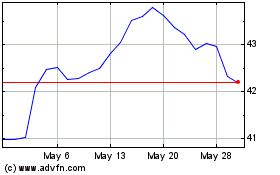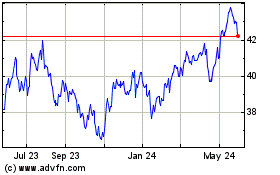Emerging market investments, once a favorite investing destination,
has mostly seen a pathetic 2013 thanks to the taper talk by the
Federal Reserve. The fears deepened again when the Fed finally
decided on a modest tapering (worth $10 billion per month) starting
in January 2014.
Domestic capacity constraints, falling currencies, higher
inflation, and the expected cease of cheap dollar on the ‘QE Taper’
weighed on emerging markets this year. Most of the emerging markets
funds closed out 2013 in the red with top ETFs like
Vanguard FTSE Emerging
Markets ETF (VWO),
iShares MSCI Emerging
Markets Index Fund (EEM),
WisdomTree Emerging Markets
High-Yielding Equity Fund (DEM) shedding more-or-less 10%.
If these were not enough,
Goldman Sachs’ (GS) warning
on emerging market investing was another nail in the coffin. In a
recent report, the bank forecasted "the strong possibility of
significant underperformance and heightened volatility over the
next five to 10 years”.
This investment banking firm also suggested investors with
‘moderate’ risk tolerance to cut down their emerging market
holdings by one-third i.e.; from 9% to 6% of the overall portfolio
(read: 2 Worst Performing Emerging Markets ETFs This Year).
Behind Goldman’s Skepticism
In its 59-page report, Goldman argued that emerging market
outperformance from 2003 to 2007 was due to some specific economic
tailwinds which are unlikely to resurface. Rather than holding the
Fed taper talk solely responsible for the recent underperformance,
Goldman pointed to the structural problems in those nations.
As per Goldman, the downside in investors’ perception about
emerging markets has been noticed due to high volatility as well as
the lower-than-expected growth rate and the subsequent returns.
“The over-involvement of governments in their economies, increasing
reliance on commodities and unfavorable demographic trends” of some
big nations are crippling growth (read: Emerging Markets =
Imploding Markets?).
This global investment bank now expects only "low single-digit"
returns out of emerging market debt in 2014 with profits and losses
around 10%. The banking giant predicts "high single-digit" returns
for stocks, with gains or losses of approximately 20%.
Our Take
Though worries are definitely building up on emerging markets in
next year’s taper-stricken environment, investors should note that
the emerging markets have already taken much of the taper shock in
stride. In fact, broader emerging funds like EEM, VWO and DEM have
gained, though marginally, in the last five days following the
announcement of modest tapering.
In such a situation, investors should be extra careful before
investing in those countries. While picking nations, the only
criterion should be better inherent strength rather than too much
of a dependence on foreign capital (read: 3 Emerging Markets ETFs
in Focus on Improved Data).
Secondly, though the Fed will scale back the QE program, the bulk
of the stimulus ($75 billion a month) still remains in place. The
Fed Chairman, Ben Bernanke commented that the bond buying program
will be curtailed in phases in 2014 if improvement in the labor
market is in accordance with their expectation and might be
completed by late 2014 (read: Fed Tapers Bond Purchases: 3 ETFs in
Focus on the News).
Thus, we believe that there is still time before one gets too
bearish on emerging nations. Investors having a strong stomach for
risks might consider buying some selective emerging market
products.
We have highlighted three options below. The trio has a great Zacks
ETF Rank of ‘2’ (Buy) and could be interesting picks at least for
the near term.
Vanguard FTSE Emerging Markets ETF (VWO) in
Focus
This ETF is the most popular and the largest fund in the emerging
market space and manages a huge asset base of $46.0 billion. With
annual fees of 18 basis points it is also one of the cheapest
within its category. China and Taiwan comprise about one-fourth of
the total holdings.
The product holds a basket of 922 stocks, with the concentration
level in the top 10 holdings at 16.7%. VWO has shot up 10.23% in
the past 6-month period.
Core MSCI Emerging Markets ETF (IEMG) in
Focus
IEMG looks to track the MSCI Emerging Markets Investable Market
Index which is a capitalization-weighted index. In its 1,750-stock
portfolio, the top 10 holdings account for 14.6% thus calling for
low concentration risks. So far, the fund has generated AUM of $3.2
billion. China, South Korea and Taiwan account for around 45% of
the total assets.
The ETF also charges only 18 bps in fees a year. The fund lost 6.3%
in YTD frame (as of December 24) while it gained 10.7% in the last
6-month period.
S&P Emerging Markets Low Volatility
Portfolio (EELV) in Focus
This ETF – tracking the S&P BMI Emerging Markets Low Volatility
Index – invests about $222.5 million of assets in 202 securities
from emerging markets. The Index comprises the 200 least volatile
stocks of the S&P Emerging BMI Plus LargeMid Cap Index over the
past 12 months.
Taiwan takes up the top spot with 26.73% of exposure while the top
10 holdings make up about 10% of the fund. Notably, Taiwan is a
relatively well-placed nation in the emerging markets pack.
Two Taiwan-focusedfunds
iShares MSCI Taiwan Index Fund
(EWT) and
First Trust Taiwan AlphaDEX Fund
(FTW) delivered positive returns in 2013. The fund added 6.09%
in the past 6 months. EELV is also a cheaper fund, charging 0.29% a
year in expenses.
Bottom Line
Emerging markets may face significant issues in 2014, but investors
should note that stock markets in developed countries hovering at
lofty levels leaves little room for material upside. What remains
undervalued now are the emerging markets.
Yes, concerns over China are looming large with a web of credit
issues. Brazil has problems of slower growth and heightened
inflation. Thailand, though having better fundamentals, is
grappling with political disruptions.
Also, in 2014, we are most likely to see a stronger dollar against
a basket of major currencies leading to huge capital outflows which
in turn will pose another round of threats to the current account
deficit balance of nations like Indonesia and India (read: Surprise
Rate Hike Puts Indonesia ETFs in Focus).
That said, we suggest investors consider some export-oriented
emerging nations which will grow from higher export demand from
developed nations as well as safeguard themselves from depreciating
currencies. These might be the picks to look at this year, and
could outperform their counterparts in this rocky space over the
next 12 months.
Want the latest recommendations from Zacks Investment Research?
Today, you can download
7
Best Stocks for the Next 30 Days. Click to get this free
report >>
WISDMTR-EM EQ I (DEM): ETF Research Reports
PWRSH-SP EM LVP (EELV): ETF Research Reports
ISHARS-EMG MKT (EEM): ETF Research Reports
ISHARS-CR MS EM (IEMG): ETF Research Reports
VANGD-FTSE EM (VWO): ETF Research Reports
To read this article on Zacks.com click here.
Zacks Investment Research
Want the latest recommendations from Zacks Investment Research?
Today, you can download 7 Best Stocks for the Next 30 Days. Click
to get this free report
iShares MSCI Emerging Ma... (AMEX:EEM)
Historical Stock Chart
From Dec 2024 to Jan 2025

iShares MSCI Emerging Ma... (AMEX:EEM)
Historical Stock Chart
From Jan 2024 to Jan 2025
